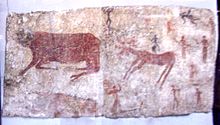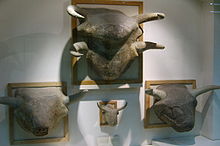Image Credit & Copyright: Rogelio Bernal Andreo (Deep Sky Colors)
The latest research on Gobekli Tepe seems to solve the problem of the hunter/gatherer to agricultural civilization problem.
This was the hardest problem of archaeology for sure.
When Gobekli Tepe was discovered, we knew archaeologists have dug something up. I for one noted that astronomy still wasn't part of human consciousness. It's still animals that were the central concern of the cave painters up to thirty thousand years ago.
The video above, National Geographic's Cradle of The Gods, shows that storing of food was the innovation that allowed the hunter/gatherers to get enough people for a long enough time to build Gobekli Tepe. Surelly, after a certain amount of time at Gobekli Tepe, some seeds sprouted, and they took notice. When they did, people experimented with agriculture and moved away from Gobekli Tepe.
The transition from hunter/gatherers to agricultural civilization appears to connect Gobekli Tepe to Catal Hoyuk - 7000 B.C. Gobekli Tepe goes back to 12,000 B.C.
Catal Hoyuk still has animal paintings similar to the cave painters,
But, they do have a preoccupation with bulls heads statues,
which we find a cultural continuity with the Minoan bullheads of the late Bronze age culture on the Crete island,
and at Catal Hoyuk, we find the venus figuries,
Curiously, we haven't found these Venus figurines at Gobekli Tepe. Who knows?!
The questions become how do we get from Catel Hoyuk to the Egyptians/Mesopotamians. How about mathematics being the difference between the past cultures before them? Well, it's one major difference.
- Looking up hunter/gatherers, I found the Sentinelese people <--link here, researchers suspect these people are cultural relics of the first Homo Sapiens coming out of Africa almost a hundred thousand years ago. They speak a language that is unclassified.



No comments:
Post a Comment